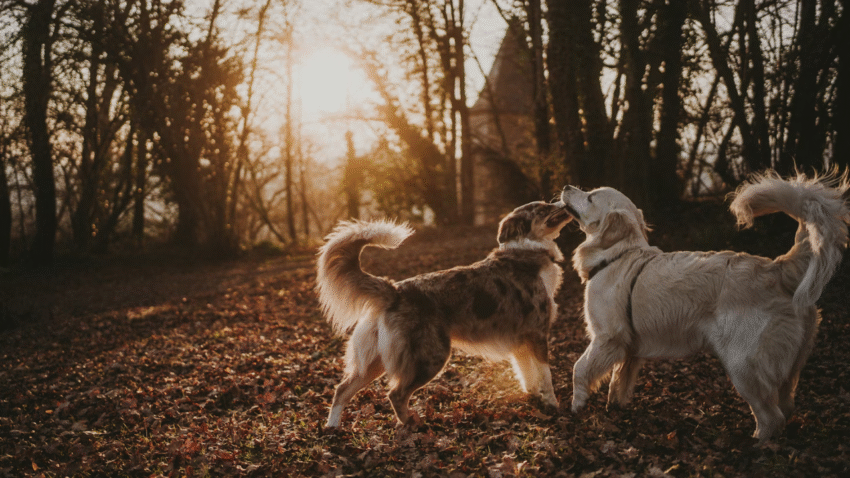Introduction
Dealing with an aggressive dog can be stressful, frightening, and confusing. Whether your dog growls, snaps, lunges, or barks excessively, it’s important to respond calmly and safely. In this guide, you’ll learn how to calm an aggressive dog safely using proven strategies, body language awareness, and long-term behavior management tips. These steps are especially helpful for owners working with reactive or fear-based aggression.
Why Dog Aggression Happens
Understanding the root cause of aggression is the first step to solving it. Common causes include:
- Fear or anxiety
- Protective or territorial behavior
- Pain or illness
- Frustration or lack of socialization
- Resource guarding (food, toys, people)
Aggression is often a response to stress—not a sign that your dog is “bad.” The goal is to manage the behavior safely while addressing the underlying cause.
Step-by-Step Guide to Calm an Aggressive Dog Safely
Step 1: Stay Calm and Avoid Escalation
Your energy matters. Dogs mirror your emotional state.
- Speak in a low, steady voice
- Avoid yelling, sudden movements, or making direct eye contact
- Don’t try to punish aggression—this often makes it worse
Keep your body relaxed and movements slow.
Step 2: Identify Triggers
Pay attention to what sets your dog off:
- Is it other dogs? Strangers? Certain sounds or settings?
- Keep a journal of incidents to find patterns
- Understanding triggers allows you to avoid or gradually desensitize them
Knowing the “why” is key to long-term improvement.
Step 3: Create a Safe Distance
If your dog is growling or lunging:
- Increase the distance between your dog and the trigger
- Step sideways—not directly away—to remain confident
- Use barriers or redirect their attention with a treat or toy
Never try to force your dog to “face their fear.” Give them space to feel safe.
Step 4: Redirect Attention Positively
When safe, shift your dog’s focus:
- Use a treat, toy, or known command (like “sit” or “look at me”)
- Keep the redirection short and rewarding
- If your dog responds, praise calmly
Over time, this builds new, positive associations.
Step 5: Use Calming Tools if Needed
Helpful tools for managing aggression:
- Head halters or no-pull harnesses for safe walking
- Calming chews or pheromone collars to reduce anxiety
- Muzzle training for extreme cases (only with positive reinforcement)
These tools are not punishments—they’re for safety and peace of mind.
Step 6: Practice Calm Routines
- Stick to a predictable daily routine (meals, walks, playtime)
- Keep your dog mentally and physically stimulated
- Avoid overstimulation in high-trigger situations
Routine lowers stress and helps your dog feel more secure.
Step 7: Work With a Professional
If aggression persists or escalates:
- Contact a certified dog trainer or behaviorist (preferably fear-free certified)
- They’ll assess your dog’s behavior and create a customized training plan
- Medical issues may also be a factor, so check with your vet
Professional support is essential for moderate to severe aggression.
Common Mistakes to Avoid
1. Punishing Aggression
- Yelling, hitting, or using force can escalate fear and aggression
- Positive reinforcement works better and builds trust
2. Ignoring Warning Signs
- Growling, stiff posture, or lip curling are signals—not bad behavior
- Respect the warning and help your dog feel safe
3. Forcing Social Situations
- Forcing your dog to meet other dogs or people can worsen aggression
- Allow your dog to set the pace and reward calm behavior
4. Inconsistency in Training
- Everyone in the household must follow the same rules and techniques
- Mixed messages can confuse your dog
5. Skipping Exercise
- A bored or under-exercised dog is more likely to act out
- Daily walks, sniffing games, and play reduce tension and aggression
Extra Tips & Recommendations
Learn Canine Body Language
- Recognize early signs of stress like yawning, lip licking, or pacing
- Intervene early before aggression escalates
Use Enrichment Toys
- Puzzle feeders and scent games burn mental energy
- A tired mind is a calmer mind
Reward Calm Behavior
- Catch your dog being calm and reward them
- Reinforce peace—not just react to outbursts
Helpful Tools
- Treat pouch for quick rewards
- Calming music or white noise for anxiety
- Snuffle mats and food puzzles
- Desensitization training plan (with professional help)
Conclusion
Calming an aggressive dog safely starts with understanding, not punishment. By staying calm, identifying triggers, redirecting positively, and using the right tools, you can reduce aggressive behavior and build trust with your dog. Be patient, stay consistent, and don’t hesitate to involve a professional when needed—every dog deserves a chance to feel safe and understood.
